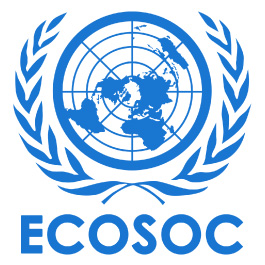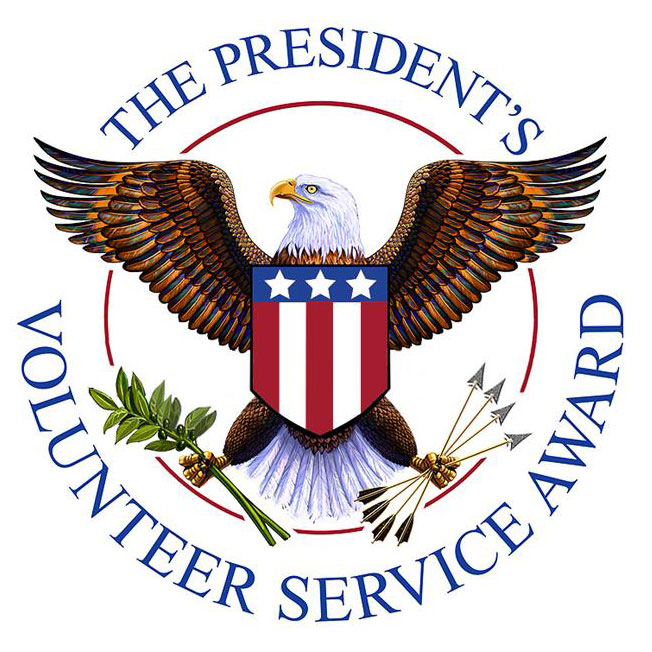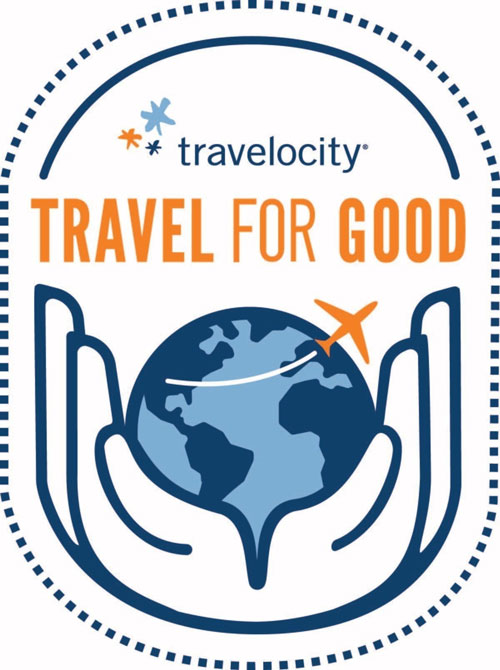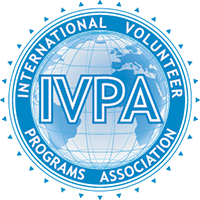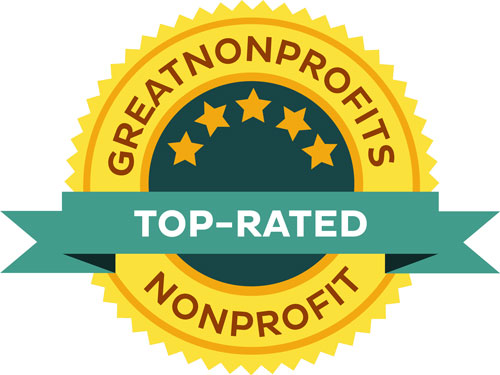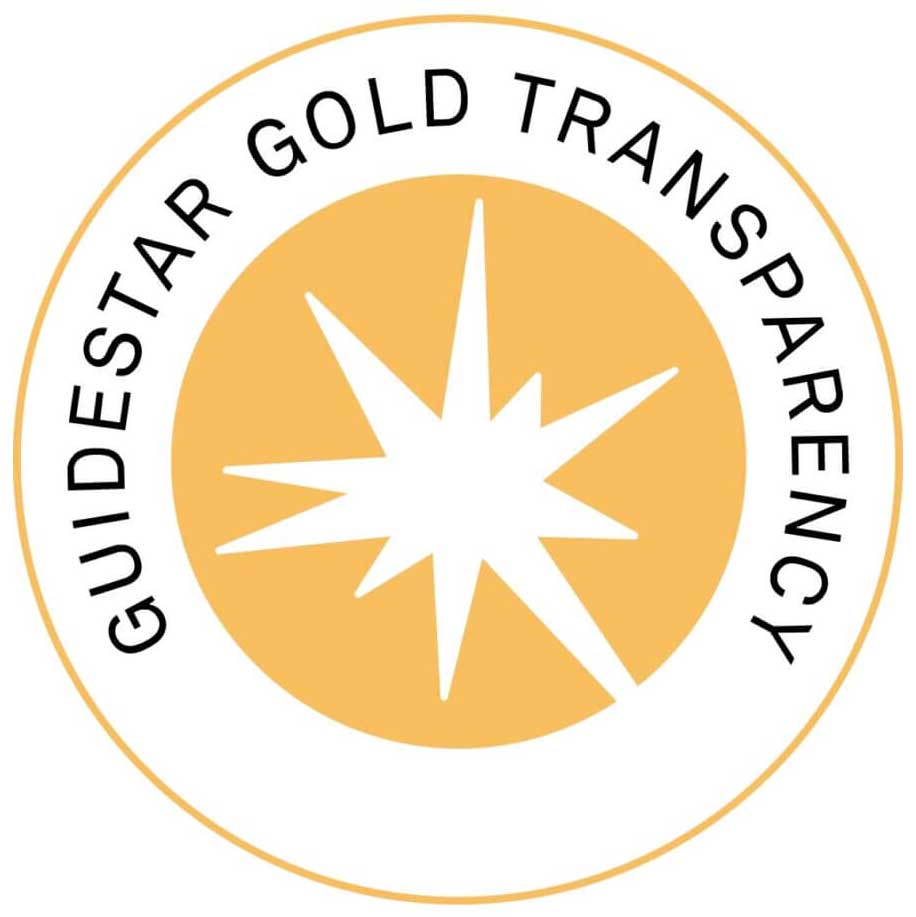Featured Articles
Featured Articles
Featured Articles
- Source: Huffington Post
Elisabeth Joy LaMotte, Psychotherapist; Author, 'Overcoming Your Parents’ Divorce: 5 Steps to a Happy Relationship' and contibutor to The Huffington Post, suggests a volunteer vacation may help your relationship:
 As a couples therapist, I hear a lot about the challenge of finding quality time and the importance of vacations. Many couples are balancing two demanding careers not to mention kids, chores and family demands. It is no wonder that when couples do finally plan some romantic time away, many opt to lie on a beach somewhere -- preferably a location accessible through a direct flight -- and chill. Many couples and families are getting ready to do just that for the last few days of summer. For sure, unstructured beach time is a wonderful way to de-stress, reconnect and recharge.
As a couples therapist, I hear a lot about the challenge of finding quality time and the importance of vacations. Many couples are balancing two demanding careers not to mention kids, chores and family demands. It is no wonder that when couples do finally plan some romantic time away, many opt to lie on a beach somewhere -- preferably a location accessible through a direct flight -- and chill. Many couples and families are getting ready to do just that for the last few days of summer. For sure, unstructured beach time is a wonderful way to de-stress, reconnect and recharge.
However, in terms of building intimacy through shared experiences, lounging on a beach is not necessarily the answer. Through my work with many couples, I notice that planning a brief vacation doing something more meaningful (and less vegetative) can do a lot to enhance a relationship. As a client recently described:
My wife and I plan such luxurious trips to treat ourselves since our work is so demanding. But the volunteer trip we took with our church did more for our marriage than any five-star restaurant or high-end resort. We were helping others together and it was such a welcome change of pace from the rhythm of our daily routine. Sharing a joint purpose and taking the focus off of daily life brought us back to what it was like when we first met.
Whether vacationing as a couple or as a family, there are many options through which your vacation time can be used to make a genuine difference.
GlobeAware, Habitat for Humanity and American Red Cross are a few of the wonderful organizations to consider. Many places of worship also arrange trips to volunteer. Or , since it is election season, consider volunteering on a political campaign.
Pick a candidate you both truly believe in. Spending a weekend with your partner canvassing for a candidate you respect can help make a difference and help your relationship. (Plus, canvassing is good exercise!) No, it is not necessarily relaxing, so take your relaxing holiday this weekend and plan something more meaningful for a weekend (or week) in the fall.
It is not uncommon to feel hesitant about taking a trip to volunteer. The experience will obviously entail breaking out of your routine and going beyond your daily comfort zone. However, try to push through that hesitation and tell yourself that you and your relationship will grow from the experience!
- Source: Morris Daily Herald
Seventeen-year-old Madison Leatherwood took a two-week working vacation in the rainforest of Costa Rica with Globe Aware. She relates her remarkable adventure with the Morris Daily Herald of Morris, Illinois:
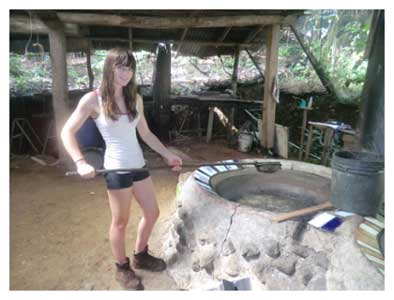 MINOOKA — When some people go on vacation, they think of relaxation — but not 17-year-old Madison Leatherwood of Channahon, a senior at Minooka Community High School.
MINOOKA — When some people go on vacation, they think of relaxation — but not 17-year-old Madison Leatherwood of Channahon, a senior at Minooka Community High School.
This summer, Leatherwood took a two-week working vacation in the rainforest of Costa Rica. She could have opted for working with turtles on the beach in Guatemala or a surfing vacation.
Instead she chose a remote village, high up in the mountains, with only 60 residents scattered around a tiny “town” called El Sur.
The residents of El Sur originally lived deeper in the rainforest, but were forced to relocate as part of a movement to preserve the land.
“A lot of people left (the community) because they didn’t want to re-establish their lives,” Leatherwood said. “They are very poor.”
As they try to rebuild in a different area, residents are aided by volunteers through an organization called Globe Aware.
Leatherwood used the opportunity to work with Globe Aware so that she could travel. In this way, she can satisfy her travel bug and help people around the world at the same time.
“I really wanted to experience a different culture and felt like this was the best option for me,” she said.
There is only one phone, a pay phone, in El Sur. Just five years ago, they got flush toilets; seven of them serve the community. They have electricity, even some TVs, but the power goes off and on.
The town has a church, a store that doubles as a tavern with an adjacent make-shift pool hall, a one-room school and a town hall building used for community dinners and meetings. The library inside the town hall is a single shelf lined with books.
Leatherwood stayed the first week in a large (by El Sur standards), one-bedroom cabin built for Globe Aware volunteers, along with a small group from three different states. The bathroom and shower, sans hot water, were underneath the raised living area.
The other volunteers went home during Leatherwood’s second week, so she stayed in the home of Gilda, a resident and representative for Globe Aware. Because she is underage, Gilda and Leatherwood’s guide Mario worried for her safety.
Gilda’s home was much smaller and more run down than the volunteer cabin. An opening between the walls and roof allowed air to circulate, but it also made it easy for critters to get inside. A huge spider didn’t faze Gilda as she swatted it off Leatherwood’s bed, saying it was nothing.
Two of the nights she was visited by a vampire bat while she was in bed. She had to keep shining a flashlight on it to startle it away.
“I didn’t sleep much,” she said.
The work Leatherwood did to aid the people of El Sur was varied. She milk cows and learned to make cheese from it. She worked at the town sugar mill, helping to prod along the oxen as they walked in a circle, turning gears that ran rollers to pulverize the sugar cane.
Some days she worked directly with the cane, straining it as it liquefied or stirring it as it turned to a consistency of syrup.
She dug shallow drainage ditches alongside the roads and helped construct small wood boxes that were used as frames and filled with cement. The cement squares were then embedded with water pipes to use in homes, protecting the pipes from swelling and bursting.
“I tried pretty much all the jobs,” Leatherwood said.
Every bit of supplies were used and re-used, she said.
“We took all the nails out of the wood, scraped the cement off and reused it,” Leatherwood said. “We also reused all the nails. That’s how limited they are.”
Leatherwood learned an entirely different way of life in El Sur. She awoke at 5 a.m. to get her work done before the rains set in around noon. During the down time, residents did a lot of relaxing, she said.
By late afternoon, the sun came back out and it was time for dinner and a little fun, like a community soccer game most nights.
Leatherwood often went horseback riding when she had free time. One day her group followed a stream through the rainforest to a waterfall. They jumped into the lake below and swam.
The locals chose a specific horse for Leatherwood to ride — white with black spots.
“They said it was like me because it had freckles,” she said.
The best part of her adventure was the many people she met and came to care about. Like her guide Mario, who did much of the construction around town; and Robert, the town carpenter who built amazing pieces of furniture with not much more than an electric saw and a few hand tools.
Gilda taught her to make cheese, peel cocoa beans for hot chocolate and strain fruit from the rainforest into delicious juices.
“Everyone was so nice. I met friends I would like to go back and see again,” she said. “(But) there’s also places like Australia. Someday I want to go to Ireland or New Zealand. I want to see how different it is from here, in as many places I can afford to go.”
- Source: Condé Nast Traveler
The experts Your travel queries answered *Volunteer Vacations |
|||
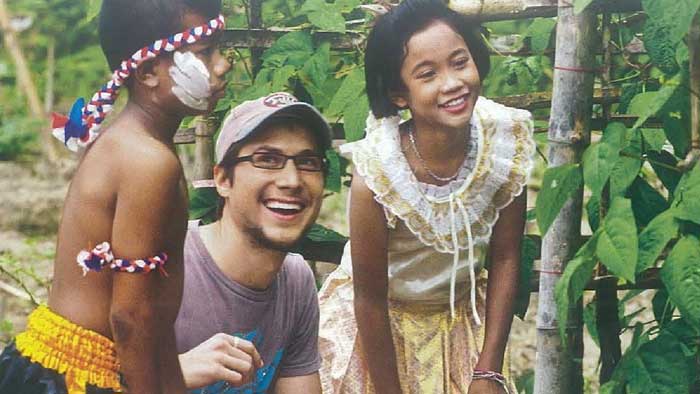 |
|||
"I have heard of volunteer vacations and am thinking of undertaking one this winter. Where would you suggest I go, and how should I plan the trip?" |
|||
 STEVEN ROSE Founder and executive director Cross Cultural Solutions STEVEN ROSE Founder and executive director Cross Cultural Solutions |
 ARJUN SHARMA Managing director. Le Passage to India Select Group ARJUN SHARMA Managing director. Le Passage to India Select Group |
 KIMBERLY HALEY COLEMAN Executive directo, Globe Aware KIMBERLY HALEY COLEMAN Executive directo, Globe Aware |
|
| Meaningful volunteering can be as simple as sharing love and affection with orphans. or practicing conversational English w1th adults seeking new career opportunities. We at Cross-Cultural Solutions (www. crossculturalsolutions.org) have sent over 26,000 volunteers to 12 countries since 1995. including our founding programme in India. Volunteers in Dharamsala. for example,have assisted teachers in special education. In Peru. volunteers have cared for people with disabilities. When planning, consider the region you want to explore, the type of work that interests you. and the time you can allocate.I recommend selecting an organisation that provides positive impact within the communities served. | Volunteer tourism is a great form of travel that allows you to make a difference while on holiday. When choosing a destination. your prime consideration should be the kind of volunteer work you will be comfortable with-whether it's environmental conservation.teaching or animal welfare. Also choose a project based on the time you can commit to it you can choose to volunteer from two weeks to two months. Your options are varied. from teaching in Cambodia and volunteering at an orphanage in Goa to working With elephants in Kerala and raising lions in South Africa. Book through a reliable tour company. as travelling independently can be challenging and finding the right project difficult. | The good news is that the destinations are virtually limitless. The bad news is that there are so many companies conducting volunteer tours that it's difficult to choose one over the other. Most companies offer programmes from one to 52 weeks. With genuine need virtually everywhere narrow your options down by selecting a place to which you have never been or to which you have an attachment. In Jaipur for example, Globe Aware (www. globeaware.org) volunteers can help children in extreme poverty with basic needs. (Other safe destinations with urgent need include Thailand. Laos and Peru). Once you've compiled a list review itineraries of agencies that offer such trips and contact former volunteers who have gone on their programmes for feedback before you make a decision. Reputable companies will gladly give out references. Many organised tours include the cost of food, accommodation, local transport, insurance, orientation material and a guide. Finally, know where your money is going: read up on how the organisation you pick spends its funds. Habitat for Humanity and Doctors Without Borders are two good options. | |
| GOT A TRAVEL QUERY? Email us at askCNT@condenast.in and our panel of experts will answer it. For more, www.cntraveller.in |
|||
- Source: Dallas Morning News
Dallas, TX (May 8, 2012) Volunteers Beth Karbe, Krystal Nix, Carol Barron, and Judy Keathley traveled with Globe Aware, a nonprofit organization that coordinates 17 unique volunteer programs in 15 countries worldwide, to San Pedro de Casta, Peru. While there, the group of volunteers began work on a badly needed irrigation system for community use. They now plan to return in order to offer the village a professionally executed solution to their water crisis.
Water is hard to come by in this secluded village high in the Andes Mountains of Peru. While it is only 50 miles from the Peruvian capitol of Lima, the journey usually takes over 5 hours due to the rocky terrain and single lane road. Globe Aware specializes in short term voluntourism, trips usually one week in duration. In that week all four women fell in love with the spirited people of San Pedro de Casta, especially the children. The ladies worked closely with the school and quickly realized the detrimental effect the lack of water has had on the village.
Kimberly Haley Coleman, Founder and Executive Director of Globe Aware comments on the impact a volunteer can make in one week, “we think of this more as like lighting a lamp. If a volunteer has an experience of helping someone side-by-side as part of a community you've lit that lamp of wanting to give back and wanting to volunteer and serving and knowing that joy.” Haley Coleman continues, “Volunteer Vacations are an ideal way to both encourage service while offering the benefit of international travel to small communities in the developing world. This experience exposes individuals to the beauties and challenges faced by others and also serves as a culturally immersive exercise”
Upon return to Florida: Beth, Krystal, Carol, and Judy decided to continue their work for the 999 residents of San Pedro de Casta. They organized and held the “Bring Water to San Pedro” fundraiser in Gainesville, Fl where over $20,000 was raised to fund an engineering team to excavate and build a proper irrigation system for the people of San Pedro de Casta.
The trip made an immeasurable impact on Beth Karbe’s view as well as the impetus to reevaluate her goals in San Pedro de Casta:
“This is a crucial need in San Pedro, since water is very scarce. The irrigation trench was essential, but despite spending hours digging every day and working very hard, we honestly didn’t get very far. The ground was bone dry and full of rock, and the 3 foot deep trench needs to run eight tenths of a mile! The new plan would not involve hand digging, nor dependence on infrequent volunteers, but construction by an engineering company with real machinery and big boy prowess. I am committed, I will go back. I will stay on this. And honestly I won't rest until it's done. This has been quite literally my life's purpose for 9 months and it will continue to be until the water flows.”
Work for this new irrigation system is planned for Summer 2012. If you would like to contribute to the Bring Water to San Pedro cause please visit : https://www.facebook.com/BringWater/app_101393123286933
About Globe Aware (R)
Globe Aware(R) is a 501 (c) 3 nonprofit charity that mobilizes short term volunteer programs around the world. These adventures in service focus on promoting cultural awareness and sustainability and are often compared to a mini "peace corps" experience. All volunteers are accompanied by a bilingual volunteer coordinator to assist the volunteer throughout their program. The program fee and the airfare to get there are fully tax deductible to the full extent of the law. Globe Aware is a member of International Volunteer Programs Association, Volunteers for Prosperity, the Building Bridges Coalition, was recommended for United Nations Consultative Status for Social and Economic Council, and administers the President's Volunteer Service Awards. Additionally, Globe Aware offsets its carbon emissions with Carbonfund.org, the country's leading carbon offset organization. Our carbon footprint is estimated at less than 70 tons annually, and we have chosen to support carbon-reducing projects in renewable energy to offset the CO2 that is produced in running our offices worldwide, from powering our offices to the transportation used to get to and from our work sites. This commitment places Globe Aware as an environmental leader in the volunteer abroad community and demonstrates proactive steps being taken in the fight against global climate change.
If you would like more information about this topic, or to schedule an interview with Globe Aware’s founder and Executive Director, Kimberly Haley-Coleman, please call Vaughn Hancock at 214-824-4562 or e-mail Vaughn@globeaware.com
Happy Birthday to the Peace Corps, Student Volunteers from New York Institute of Technology (NYIT) in Ghana, A profile of Globe Aware, and a short doc on New Orleans.
Happy Birthday to the Peace Corps, Student Volunteers from New York Institute of Technology (NYIT) in Ghana, A profile of Globe Aware, and a short doc on New Orleans.
Globe Aware was featured in a June, 2011 spotlight in the International Herald Tribune:
"The habitual characteristics of vacations are quite notorious: Stress relief. A hiatus from your accustomed duties. The effortless Pleasures of relaxation, or they can be used to simply revitalize a relationship. Although these likings may be essential, your short-term journey can also benefit the world around you," writes Kimberly Haddad in Pasadena Magazine.
Ms. Haddad goes on to add that there are are a number of affordable volunteer vacations across the country that will allow the interested and inspired to travel to a unique destination "while giving back to the community. Whether it's environmental assistance, lending a kinding hand to a child's education or habitat restoration for wildlife,everyone has the opportunity to take part in an adventure with a purpose."
Included in her list of top volunteer vacation providers is Globe Aware:
“Globe Aware is a non-profit organization that organizes volunteer vacations in various parts of the world including Africa, Asia, Eastern Europe, and Latin America.
Globe Aware allows volunteer travelers the extraordinary opportunity to be involved in a community while gaining valuable knowledge about cultures and the foreign environments we may not be accustomed to. Set goals for yourself and work alongside locals and other volunteers in elaborate hands-on projects like working with disadvantaged children in India, building shade shelters for elephants in Thailand, and working with youngsters who suffer from Down Syndrome in Cuba.
Some volunteer vacation organizations do not offer room and board, but Globe Aware is one of the few that do. Although it may not be as extravagant as you wish, the cost of the program includes housing accommodations and traditional style meals during your stay.”
Globe Aware was featured in a June, 2011 spotlight in the International Herald Tribune:
Kelly Greene, a staff reporter for The Wall Street Journal in New York, considered how individuals can change the world on a limited budget. She notes that one of the the best methods was through a volunteer vacation with Globe Aware. Read the Dec. 20, 2010 article in its entirety:
How to Change the World…
…Whatever the size of your wallet. These ideas, with budgets from $20 to $20,000, can help better the lives of others—and your own.
By KELLY GREENE
Got any plans for next week? Perhaps you could begin changing the world.
Yes, household budgets remain tight. But you don't have to be a lottery winner to make a difference in your community or halfway around the globe. People who are winding down first or primary careers and looking for new directions are discovering that for the cost of a weekend getaway, they can help change the world. Or start to.
Bob and Jo Link, for instance, retirees in Portland, Ore., serve on a nonprofit board that awards scholarships in Belize. Mr. Link, age 69, also troubleshoots computer problems for African refugees. This after the couple spent two years in the Peace Corps, helped with Hurricane Katrina cleanup, assembled computers for schools in Guatemala and worked with deaf orphans in Peru.
The cost to them? A few plane tickets, some scholarship donations and sweat equity.
"When you do this kind of stuff, you get back more than you really expect," Mr. Link says. "A lot of people wouldn't, or couldn't, put two years into the Peace Corps, but they could afford to spend a week in Peru."
We decided to look for ways that people, whatever the size of their savings, can change the lives of others—and their own. So go ahead: Pick one of the following budgets and write it on your calendar: "CTW."
$100 and Under
SERVICE PROGRAMS: In some cases, you actually can get paid while you're helping to make a difference.
With the help of DonorsChoose, students in a school in New Haven, Conn., received new musical instruments to form a school band.
The Links, for instance, earned $300 apiece each month in the Peace Corps, where about 7% of the organization's volunteers last year were age 50-plus. Closer to home, AmeriCorps, one of the largest national-service programs, is aiming for 10% of its 85,000 participants to be at least 55 years old—up from 4% in fiscal 2009.
AmeriCorps volunteers receive federal stipends averaging $11,800 for a commitment of 10 months to a year. They can also receive education grants of as much as $5,350, which, starting this year, they can transfer to their grandchildren, says Patrick Corvington, chief executive of the Corporation for National and Community Service, the agency that runs AmeriCorps. Work varies from part-time service in a volunteer's own community to full-time opportunities across the country. Options include helping to rebuild communities on the Gulf Coast and installing solar-electric systems in low-income California neighborhoods.
BECOME A LENDER: For what you spend today on lunch, "microfinance" allows you to play a big role in jump-starting modest entrepreneurial undertakings around the world—whether it's boosting inventory at a produce stand in Dar Es Salaam, Tanzania, or providing additional nets to fishermen in Cambodia.
Farmers in Peru, with assistance from Heifer International, are able to afford cattle to help plow and seed their fields.
If you're interested in lending to an individual entrepreneur overseas, Kiva.org lets you choose the borrower on its website. If the loans are paid back, you can fund another loan, donate the proceeds to Kiva or get your money back. DonorsChoose.org, where you can pick a classroom project to fund with as little as $1, sifts proposals by cost, school poverty level and subject. Requests might include $140 for dry-erase markers or $2,000 for camcorders and laptops for budding filmmakers.
Heifer International, through which $20 buys a flock of chickens or $5,000 delivers an "ark" of animals to a family or village in Asia or Africa, finds that many people age 50-plus seek out the cause around holidays. Then, as they learn more about it, many wind up joining study tours to the communities raising the animals, coordinating fund-raising efforts in the U.S., or working at several Heifer learning centers, says Steve Stirling, executive vice president for marketing in Little Rock, Ark.
$300 to $4,000
GIVING CIRCLES: One way to get more bang for your charity buck is to join a so-called giving circle, a group with a common interest that pools its resources and collectively decides where to put its combined money to work.
In the 1960s, Sally Bookman studied social anthropology at the University of California, Berkeley. Now she leads a Dining for Women chapter with two dozen women, many of them retirees, attending monthly dinners in Santa Cruz, Calif. At each meeting, they eat a potluck dinner and chip in about $30 each to support women entrepreneurs in developing countries.
The national Dining for Women group, based in Greenville, S.C., picks the cause du jour and sends educational materials to local chapters. But the members' life experience gives the gatherings their flavor, says Ms. Bookman, 67. "At one meeting we were learning about women in a remote village in the jungle in Peru, and one of our members had been to that village for three days with her husband," she says.
If you join a giving circle, you can choose simply to write checks, or take a more active role researching where the circle's money might have the most impact.
"VOLUNTOURISM": Trips on which people do volunteer work, typically overseas, have exploded in number and type in recent years.
How do you choose among the estimated 10,000 trips out there? Ask how the work you do will fit into the overall scope of the on-the-ground project, says Alexia Nestora, founder of Voluntourism Gal, an industry blog. If you're working with children, ask how what you do will build on what the previous volunteer did. (You don't want to be the 20th volunteer to teach them to sing "Itsy Bitsy Spider" in English, for example.) Also make sure the operator provides emergency medical insurance and has an employee living in the country who speaks English in case of political upheaval or a natural disaster.
Mark Sanger, a 58-year-old retired transportation engineer in La Grande, Ore., has taken several weeklong trips with Globe Aware, a Dallas nonprofit that coordinates volunteer travel work. In a tiny Costa Rican village, his crew slept in A-frame cabins and helped villagers build housing in hopes of drawing national-park tourists and generating additional income. He also spent time eating meals in local families' homes, where you could "see how they interact with their kids, what pictures they have on their walls." He enjoyed his next trip even more, teaching English to children in Cambodia.
"It was like a whole other world opened up to me," he says. "There's a sense of adventure…without your life in danger every day. It's a nice balance of doing something interesting, exciting, different and incredibly rewarding."
Your room, board and airfare in some cases are tax-deductible if you travel with a nonprofit. Vincent Mirrione, 69, of Newman, Calif., has taken seven trips with Cross-Cultural Solutions, a nonprofit operator in New Rochelle, N.Y., for six to eight weeks at a time. His work at a Guatemala soup kitchen and orphanage, Russian senior centers and a project that Mother Teresa started in India have wound up costing about $300 a week after the tax break, he says.
BACK TO SCHOOL: Retraining, as a classroom teacher, for instance, can jump-start a second career as well as benefit others.
"Green," of course, is hot. Clover Park Technical College, Lakewood, Wash., offers a number of environmental-sustainability programs, which include cla ssroom study and hands-on field work. The programs last 12 weeks to two years, depending on an individual's goals.
Pam Kirchhofer, 49, enrolled there in a 15-month sustainable-building program after she was laid off as a personal-finance counselor. The attraction: "You're helping people save money by conserving energy and resources, and…you're being a good steward of the Earth," she says. The tough part: "I haven't had a math class in 28 years, and we just did an energy audit of this woman's house using algebraic equations."
$5,000 to $10,000
JOIN A BOARD: A director on a board? You? Why not?
"Almost half of all nonprofit board seats never get filled. Nonprofits would love to have more qualified candidates, but they don't know how to tap into really talented people in the community," says David Simms, a partner with Bridgespan Group in Boston, which advises nonprofits. (One new resource for a board-seat search: The websites where nonprofits place want-ads for volunteers also are starting to post vacant board seats.)
Bonnie R. Harrison, 61, a retired Corning Inc. executive, became involved with Southern Tier Hospice in Corning, N.Y., after serving as her father's caregiver while he was also receiving hospice services. To join the board, Ms. Harrison asked her father's hospice nurse to write a recommendation. Shortly after Ms. Harrison retired last year, the hospice board's chairwoman stepped down, and Ms. Harrison was asked to take her place.
"The challenge of working along with the board, the staff and different organizations has been a great help in making the transition away from a high-pressured job," she says.
BECOME A BENEFACTOR: So, you like the idea of having a charitable vehicle to help others, but you aren't Bill Gates. Consider a donor-advised fund, a good tool for people who want to give away amounts starting at about $5,000 a year.
Such funds can be set up through big financial-service companies, like Fidelity Investments, as well as university, religious and community foundations. The fund will invest your assets and make grants based on your guidance. Typically, you become eligible for an immediate tax deduction.
"It might be a little more than you can handle doing on your own, yet you don't want to set up the superstructure of a foundation," says John Gomperts, the recently named director of AmeriCorps. "You might go to a community foundation and say, 'I want to give this money away, and I care about the humane care of animals, so please give me some suggestions and administer this for me.' "
$20,000 and Up
START A NONPROFIT: You have a cause you're passionate about, and nobody seems to be tackling it. So you dream of starting a nonprofit to that end. Expect to spend at least $10,000 to $20,000 on start-up costs, including the legal expenses involved in creating an organization and asking the government to grant you a tax exemption, called 501(c)3 status.
First question: Are you sure there are no similar efforts? The U.S. has about 1.5 million nonprofits, and "many of them are doing phenomenal work," says Mr. Simms in Boston.
If your idea truly is unique, try to find a community foundation to "incubate your effort so that you can worry about the service you want to provide" instead of setting up the business end, says Christopher Stone, faculty director of the Hauser Center for Nonprofit Organizations at Harvard University in Cambridge, Mass.
Elaine Santore is the 59-year-old co-founder of Umbrella of the Capital District, a Schenectady, N.Y., organization that helps older adults, in part by matching them with retirees-turned-handymen. She and her partner jump-started the program before receiving their not-for-profit status. "I would clean houses if need be, and he would mow yards," she says. "It's good to be hands-on at first so you know what it's like."
ENDOW A SCHOLARSHIP: What if you win the lottery, or your stock options go through the roof? The sky's the limit: You could fund scientists trying to cure cancer, build a new stage for your local symphony, or even start your own university and town, as did Domino's Pizza founder and philanthropist Tom Monaghan.
One of the more popular big-ticket items, though, is creating your own college scholarship. With $1 million, you could set up an endowment that should last for decades, says Becky Sharpe, president of International Scholarship & Tuition Services Inc., Nashville, Tenn., which administers privately and publicly funded scholarships.
Joe Scarlett, retired chairman and chief executive of Tractor Supply Co., Brentwood, Tenn., started a family foundation in 2005 with $2.5 million to provide college scholarships to business students from middle Tennessee, and he hired Ms. Sharpe's company to run the award program.
"We generate way too few business leaders in our country, so we wanted to focus our scholarship money on business," says Mr. Scarlett, 67. The foundation now has a balance of approximately $24 million, thanks to additional gifts from the Scarletts and growth in its value, and is expanding its efforts, supporting students in high schools and even preschools.
Page 7 of 16
